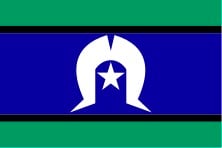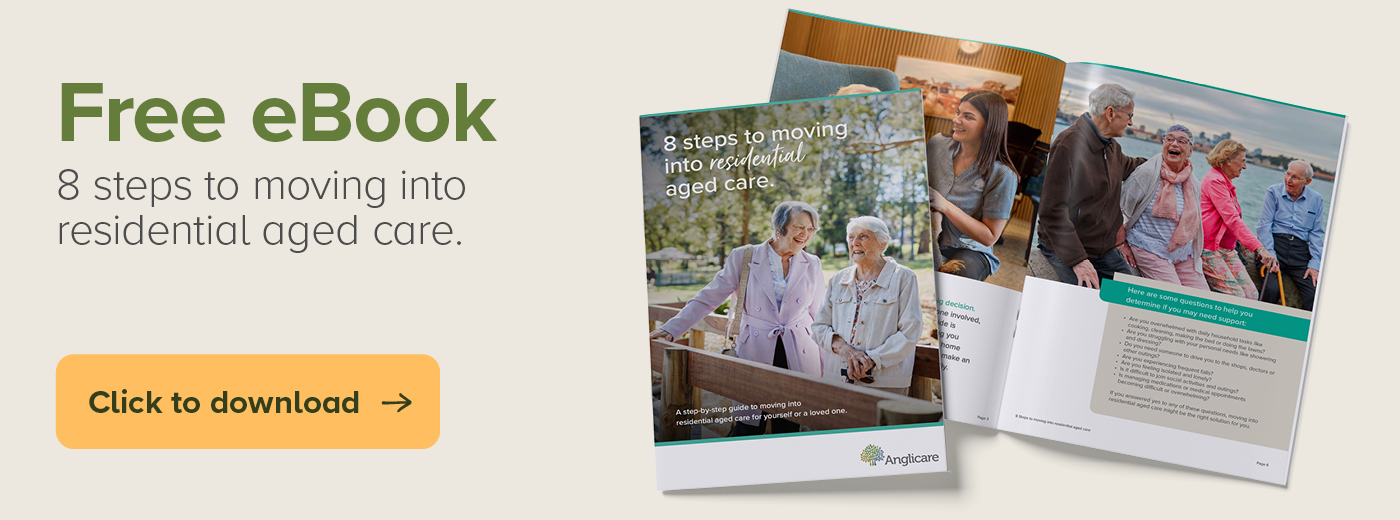The cost of residential aged care is more affordable than you may think
Have you started looking into residential aged care for yourself or a loved one, and are overwhelmed with the various fees and charges? Or maybe felt it was too expensive? You may be surprised to learn the cost of residential aged care is more affordable than you think.
The purpose of this article is to explain the different fees, charges, and levels of government support to help you determine if it is the right option for you.
Levels of support for residential aged care
There are three main levels of financial support available for aged care, based on your assets and income.
Fully supported: If your assets are below *$61,500, you’ll be considered fully supported, and the government will pay your accommodation costs.
Partially supported: If your assets fall between *$61,500 and *$206,663.20, you’re partially supported, which means the government will contribute something, but you’ll also be asked to pay a contribution towards the cost of your accommodation.
Non-supported: If your assets are above *$206,663.20, you’re considered non-supported, which means you’ll have to cover the full cost of your accommodation and care.
Residential aged care fees and charges
The cost of residential aged care depends on your personal financial situation, but for most people, the government helps cover some, or all, of the fees and charges. Let’s have a look at the various fees and charges and how much you may need to pay.
Accommodation payment
This payment goes towards the building and maintenance, shared communal spaces and your room. What you pay also depends on your level of support from the government.
Fully supported: The government pays your full accommodation costs.
Partially supported: You’ll be asked to contribute something towards the cost of your accommodation. You can pay this as a lump sum called a refundable accommodation contribution (RAC) or a daily payment, called a daily accommodation contribution (DAC) or a combination of the two.
Non-supported: You’ll need to pay the full accommodation cost, however you have an option to either pay as a lump sum called a refundable accommodation deposit (RAD) or a daily amount known as a daily accommodation payment (DAP), or a combination of the two.
Basic daily care fee
Everyone pays this. It helps cover everyday living costs like meals, cleaning and laundry. This fee is set by the government and is currently 85% of the basic single aged pension.
Means-tested care fee
This is an extra contribution that goes towards care, based on your income and assets. Not everyone pays this, and it is different for each person, depending on their income and asset assessment. There are caps on how much you can be asked to contribute each year and over your lifetime. Once you reach a cap you won’t have to pay any more. *Currently the maximum you can be charged is $34,311.23 per year or $82,347.13 in a lifetime.
Additional (or Extra) services fee
Some providers also provide additional services to provide a higher quality of goods and services, so you can continue to live with the choice and comfort you’re used to. The fee to cover these services is called an Additional Services Fee or Extra Services Fee. Each provider must provide a list of what is included in this fee, which may include things like: freshly prepared meals, more meal choices, a TV in your room, or lifestyle extras like exercise classes, special interest groups or outings.
*These amounts are based on the thresholds set by the Australian Government for the period 20 March to 20 September 2025.
Lump sum and daily payment options for accommodation
If you are partially supported or non-supported you will have three options to pay your accommodation.
Lump sum payment. Known as a refundable accommodation payment (non-supported residents) or refundable accommodation contribution (partially supported residents) is the lump sum amount that you choose to pay towards to your accommodation. It is currently refunded, in full, when you leave.
Daily payment. Known as the daily accommodation payment (non-supported) or daily accommodation contribution (partially supported) this is the balance from the accommodation purchase price, less any lump sum payments. This amount is calculated daily plus interest. The interest amount is set by the government, called MPIR - maximum permissible interest rate which is indexed each quarter.
Combination. You can also choose a combination of the two, there is no maximum or minimum requirements for the lump sum so you can choose the best combination for your financial situation.
How to access aged care and any government support
Under the current system you will need to get an ACAT - Aged Care Assessment Team (note this will change after 1 November 2025). This process will determine what your care and support needs are and provide eligibility for aged care services like home care, residential care and respite. You will also need to submit your income and assets to Services Australia to determine your eligibility for any government support. To learn more about this process visit: Apply for an aged care assessment online | My Aged Care
Helping you feel confident about residential aged care costs
At Anglicare, we understand that the cost of residential aged care isn’t always simply about money, its peace of mind too. Knowing your loved one will be well cared for with dignity and respect, in a loving and safe environment. Rhythm of Life® is Anglicare’s model for person-centred care. It is guided by eight principles designed to support your choices, enrich your quality of life and empower you to live the way want.
To learn more about the residential aged care process down our free ebook.
Explore the Anglicare difference
Visit Anglicare's residential aged care homes to see how support, comfort and community come together, and how the right guidance can help make it all feel possible.
You can also follow Anglicare on Instagram and Facebook to see daily life in our homes and what care with heart truly looks like.
Enquiries
Our team of caring consultants are looking forward to assisting you navigate residential aged care. We understand it can be overwhelming, and it is a time of change and transition for everyone involved. If your need is urgent you may prefer to call 1300 111 278.
If you are interested in Support at Home - please click here.
If you are interested in Aged Care Jobs - please click here.
For residential aged care enquiries please use the form below.
Enquire here


Inspired by the gospel of reconciliation in Jesus Christ, Anglicare's vision for reconciliation is a nation in which Australia's First Peoples are restored in dignity, respect, empowerment and opportunity.



